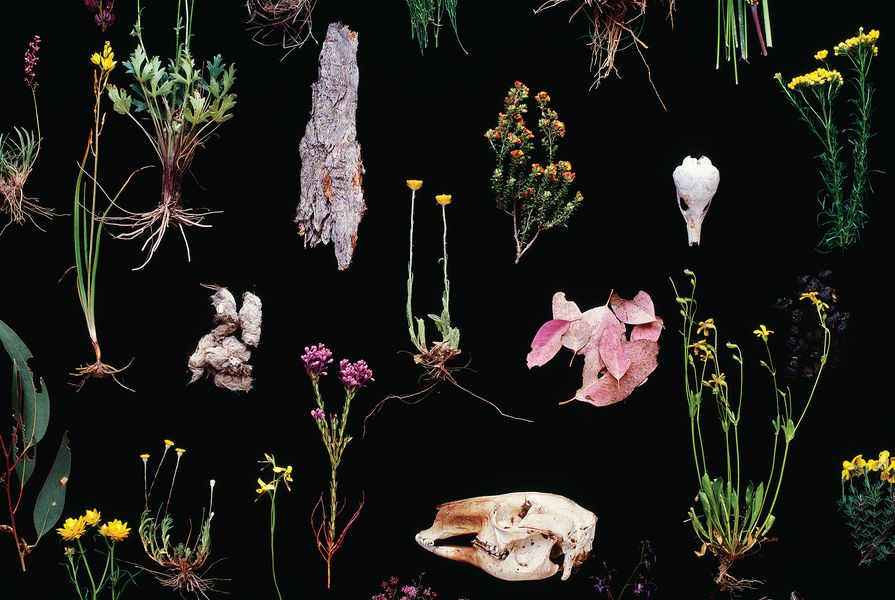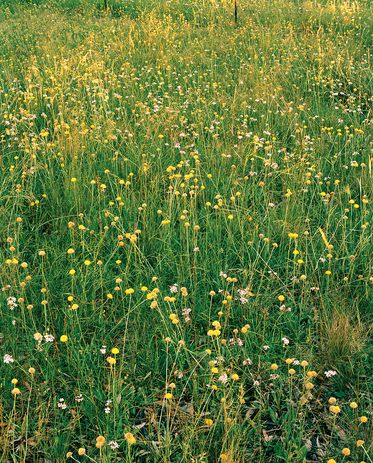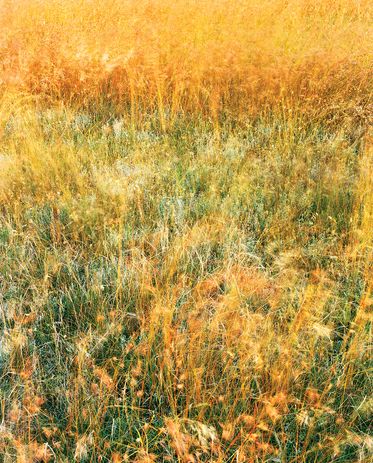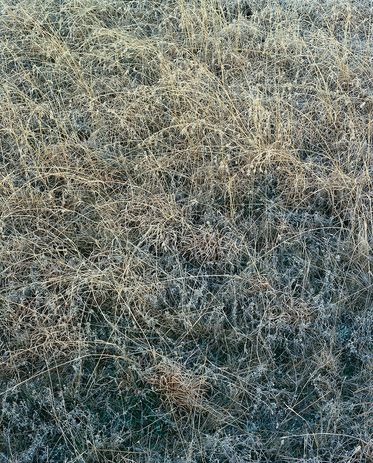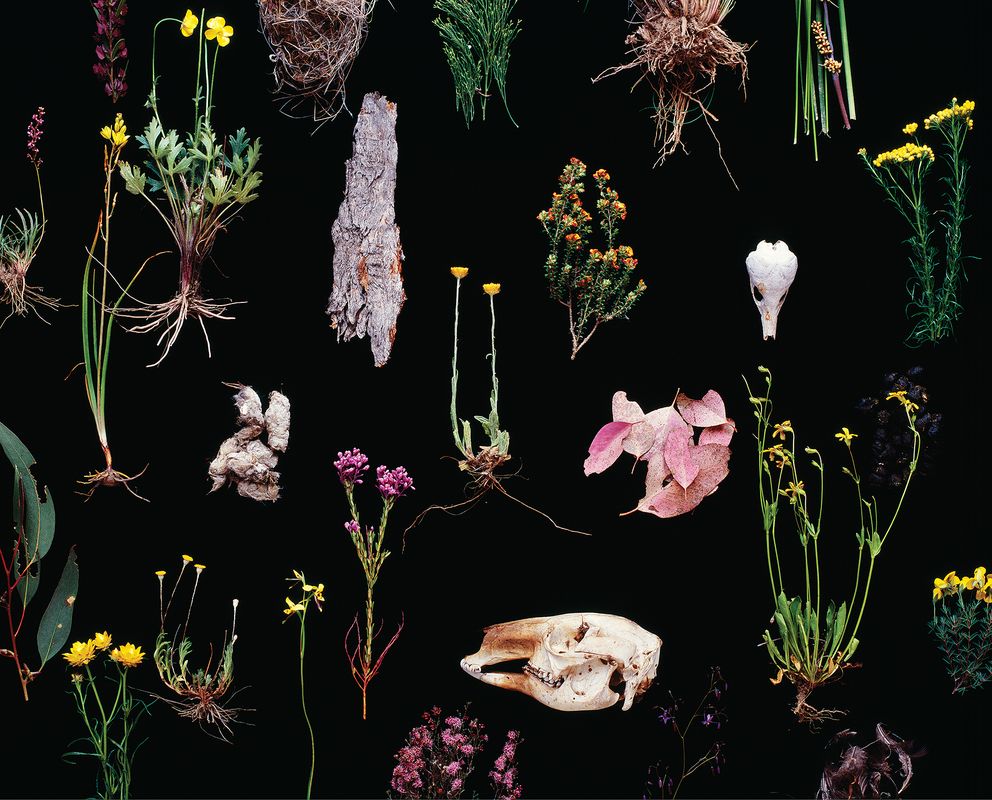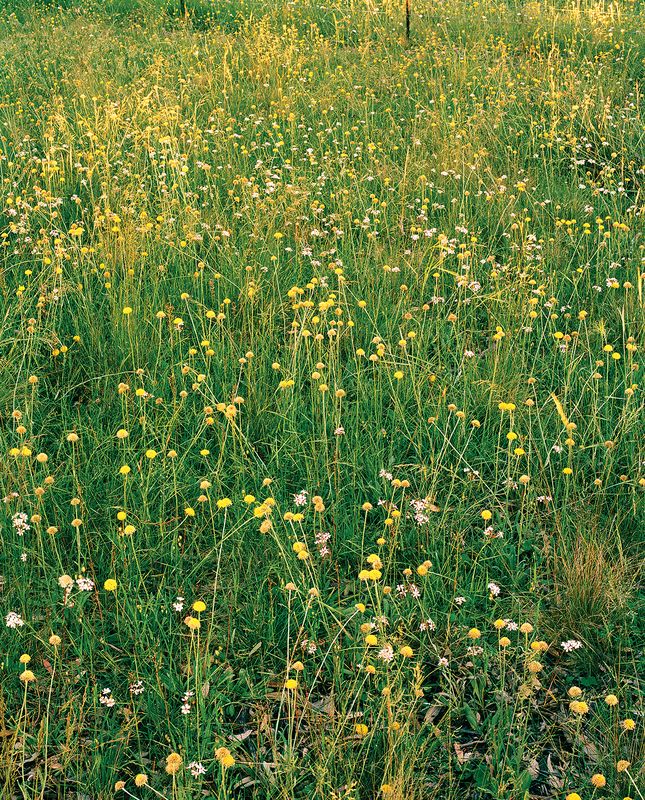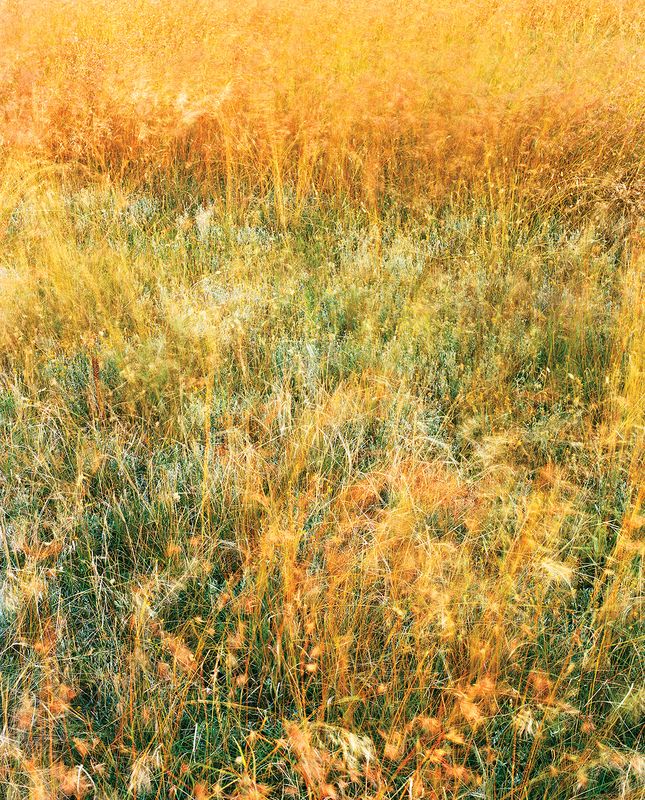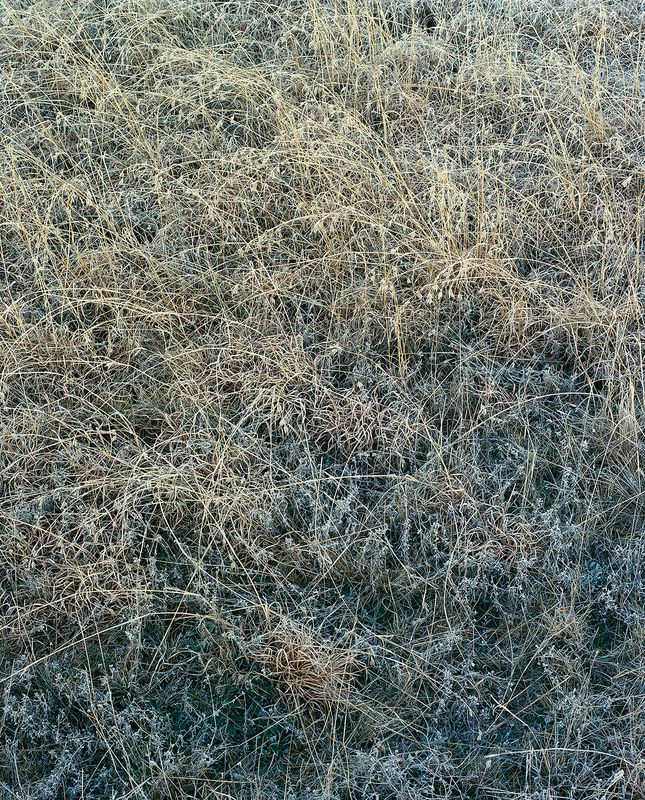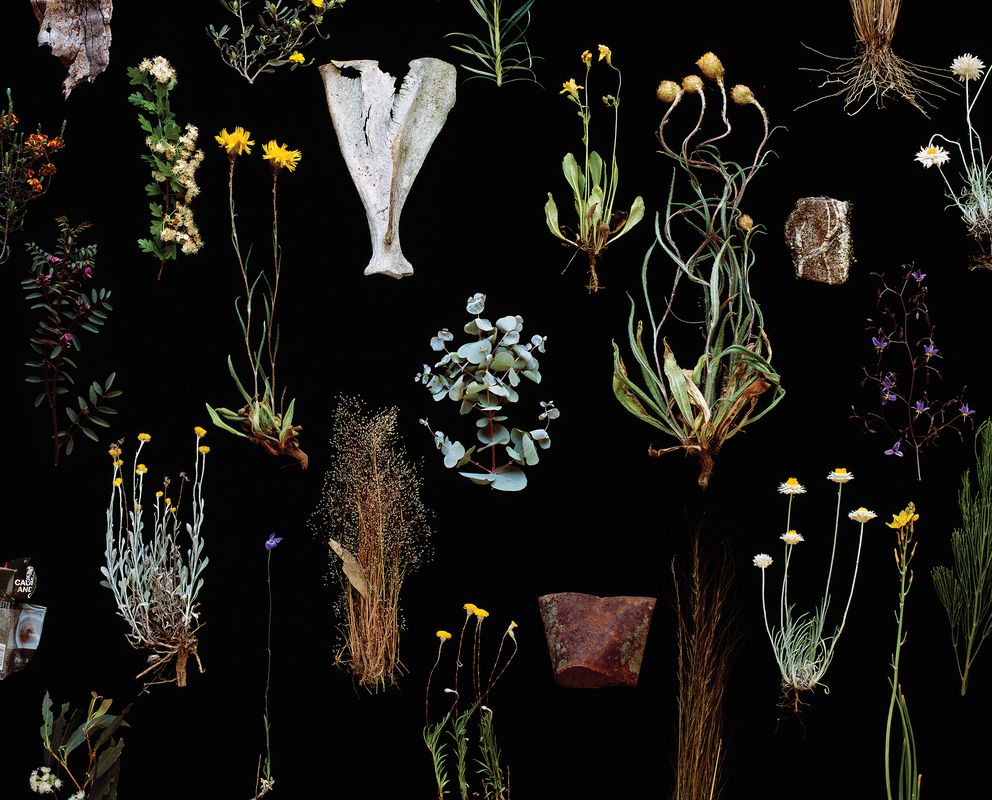Europeans have wrought enormous changes to grasslands associated with eucalypt woodlands (“grassy woodlands”) since the nineteenth century. Virtually all of the species that we consider native to Australia have been managed for tens of thousands of years by means of Aboriginal burning and hunting practices. From the mid-twentieth century these same grasslands have been subject to industrial farming and have undergone dramatic changes, which, while striking to a botanist, are often invisible to the untrained eye.
The setting for these photos is south-eastern Australia – the modestly watered tablelands and slopes, which sit between the Great Dividing Range and the country’s semi-arid interior. Here, temperate grassy woodlands once reigned, typified by well spaced eucalypts, with a ground layer of perennial grasses dominated by kangaroo grass and Poa tussocks and many species of forbs. Grassy woodlands, or the remnants of them, are the rural backdrop that most city dwellers drive through when they visit a friend or relative in the country’s south-east. Open paddocks of green or tawny brown, scattered open-grown trees with short trunks and broad spreading crowns are so familiar, yet often so unknown to us. But trees such as yellow box (Eucalyptus melliodora) and Blakely’s red gum (Eucalyptus blakelyi) only represent a tiny fraction of the plant species that grow in these grassy woodlands. Most species are in the ground layer.
Bookham, New South Wales, spring, reference grassland. The billy buttons’ brightness fading nine days later. Flowering in grasslands can be fleeting.
Image: Carolyn Young
In many cases where one now sees scattered woodland eucalypts, nearly all native plant diversity has disappeared – the hundreds of grass and wildflower species that once occupied an acre of grassland reduced to a handful. The changed conditions of industrial farming that have allowed introduced species to replace native ones no longer allow for the establishment of eucalypt seedlings. Thus, where there is an absence of young eucalypts in a paddock, it is an indication of intensive farming’s effects on the ground layer and the risk of a complete loss of native trees and wildlife habitat in the future. Intensive farming practices have led to the endangered status of many types of eucalypt grassy woodlands.
“Reference grasslands” refer to the form the grassy ground layer took before European invasion in the 1800s. These grasslands were subject to regular burning practices by Aboriginal people, with the aim of encouraging fresh grass growth and attracting game for hunting. Native pasture differs from reference grassland through the addition of livestock. Native pasture would have formed the entire extent of grassy eucalypt woodland in the 1800s, and most of it until the mid-1900s after which more intensive land uses started to predominate. In its “purest” form, native pasture would have harboured a high diversity of the more grazing-tolerant native species. Here, the tall luxuriant grasses abundant in reference grassland, would most often have been replaced by shorter-growing species such as wallaby grasses, with many of the more sensitive wildflowers being eaten out by the livestock – the most notable being the iconic murnong (Microseris walteri), whose yam-like tubers were once a staple food source for Aboriginal people.
Bungendore, New South Wales, summer, reference grassland. As summer progresses, the grass flower heads (for example, Themeda australis) extend above the sward and eventually mature to gold.
Image: Carolyn Young
In adding fertilizer to a native pasture the intent has been to increase productivity for the purposes of carrying greater quantities of livestock. The effects of fertilization on native pasture are dramatic – after only a few years, a native pasture will be completely transformed into an exotic-dominated one. The vast majority of native plant species making up native pasture are not adapted to the conditions of fertilization and will most often be overtaken by faster-growing exotic species.
Even more transformative than fertilized pasture, sown pastures are the result of cultivation and the deliberate establishment of particular varieties of grasses or legumes. Soil erosion and loss of the planted species is an ongoing hazard under these conditions, as the cultivation process destroys the ground cover and the sown grasses are subject to heavy grazing in order to recoup the cost of inputs.
Increasing intensification has proved relentless over the past century, with the result that reference grasslands are now barely a presence in our landscape – somewhere between none and a few scattered hectares here and there. Reference grasslands contain a wealth of plant and animal species that occur nowhere else – and nurture a genetic resource of unfathomed significance. The long-term ecological benefits of reference grassland and native pasture include perennial grass cover to protect soil, foster the regeneration of trees, provide food and habitat for pollinators, capture rainfall and keep the landscape moister and cooler. Less tangible but equally important are their unique links to our biological and Indigenous history.
Bungendore, New South Wales, winter, reference grassland. The cold and frost have leached all the colour and goodness from the kangaroo grass (Themeda australis).
Image: Carolyn Young
For native species to survive on the continent on which they evolved they need room to live. In the case of grassy woodlands, intensive land uses (fertilized areas, sown pastures and crops) currently existing on more than a third of the landscape threaten the long-term viability of our country’s native flora and fauna. Intensive and vigorous action needs to be taken to counteract the loss and fragmentation of our remaining grassy woodland habitat, shrinking populations of native plants and the off-site, run-on effects of intensive farming and urban land uses. The future of our grassy woodlands, and the diversity of flora and fauna they harbour, relies on our ability to plan for and regulate how we use the land to achieve this balance.
This essay and the following photographs are an edited excerpt from ‘Grassland in Transition’ by Carolyn Young and Sue McIntyre, published by Carolyn Young, 2018.
Source
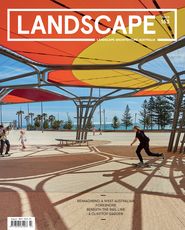
Practice
Published online: 26 Sep 2019
Words:
Carolyn Young,
Sue McIntyre
Images:
Carolyn Young
Issue
Landscape Architecture Australia, August 2019

